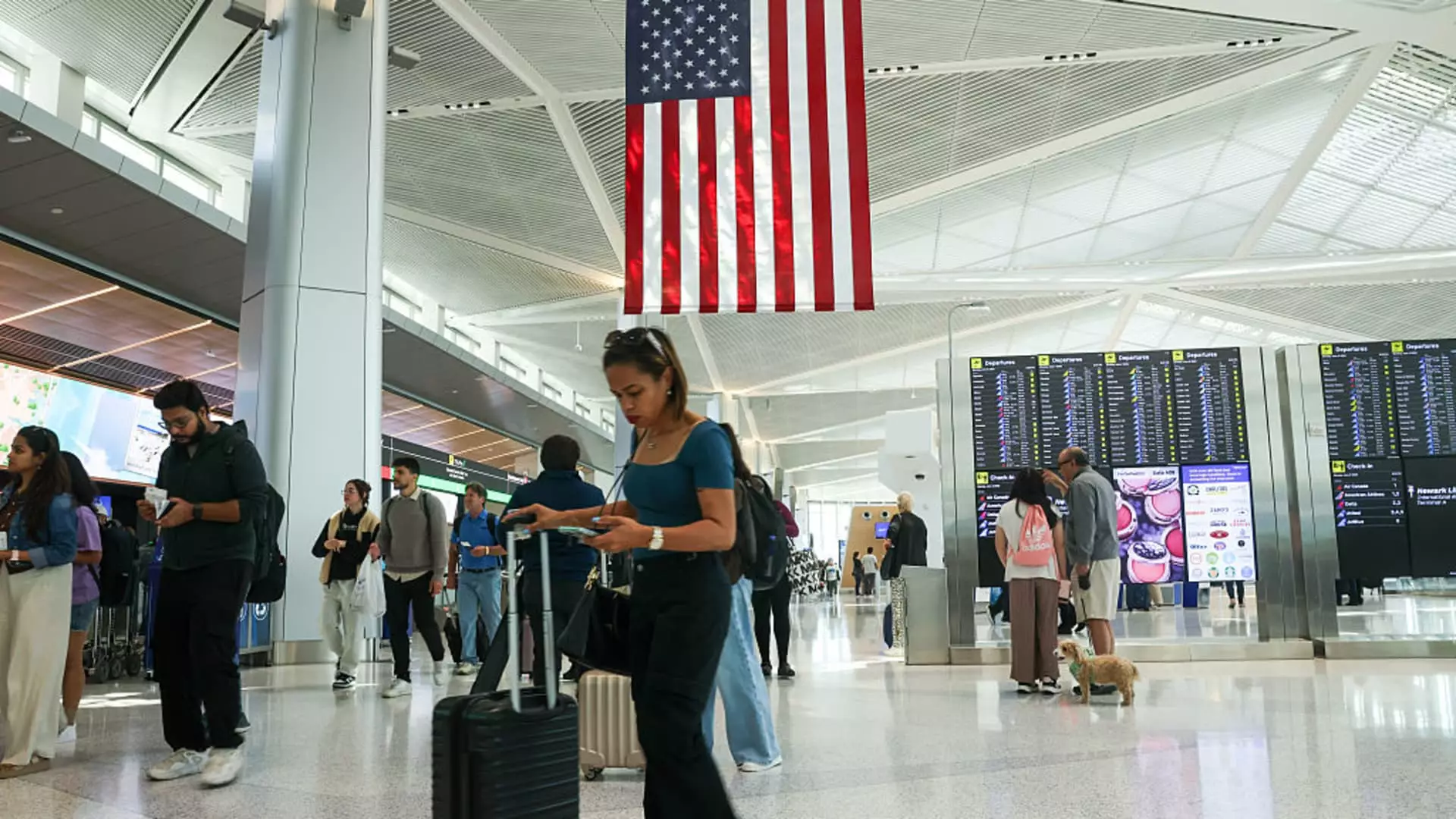The optimistic narratives surrounding the airline industry’s supposed rebound are increasingly exposed as hollow. While headlines tout record-breaking holiday travel and falling fares, a deeper examination reveals a fragile and uncertain landscape. The sector’s recent resilience is less a testament to genuine recovery than a fleeting lull before the inevitable turbulence. The numbers, painted as signs of progress, cloak underlying issues: sluggish demand, economic volatility, and strategic miscalculations.
Contrary to the upbeat spin, airlines are grappling with overcapacity and uncertain demand forecasts. Major players like Southwest, Delta, and American Airlines are already retreating from optimistic outlooks, pulling back their forecasts for 2025 amid unresolved economic ambiguities. This retreat signals a recognition that the industry is far from stable; instead, it teeters on an unstable edge, vulnerable to external shocks like tariffs, inflation, and shifting international travel patterns. These obstacles threaten to undermine the false narrative of a seamless recovery and expose the industry’s overreliance on short-term fare erosion to mask deeper issues.
The Myth of a Strong Travel Resurgence
While the summer travel season appears busy externally — over 18.5 million TSA screenings expected in a single week — this optimistic figure cannot disguise the underlying weakness. Record travel volumes, when scrutinized, do not represent a sustained or genuine resurgence, but rather a temporary surge that may plateau or decline. High travel figures often ignore the broader economic context: employment data surpassing expectations, yet consumer spending on airlines declines sharply, down 11.8% in June from the previous year.
Moreover, the notion of a resilient market is undercut by consumers’ behavior. Falling fares suggest a desperate attempt by airlines to fill seats, rather than a sign of genuine demand. The industry’s tactic of discounting fares to stimulate volume merely defers the inevitable reckonings of oversupply and declining profitability. Airlines are responding with strategic cutbacks on unprofitable routes, particularly on off-peak days, signaling a recognition of the fragile demand landscape that no amount of promotional fares can sustain in the long term.
International Travel: A Mixed Bag of Opportunities and Challenges
International trips, historically a bright spot for major carriers, reveal a conflicting picture. While outbound international flights are up slightly, fares have plummeted, pulling prices back down to 2019 levels. Europe-bound trips now average around $817 — a significant drop from last year and a return to pre-pandemic prices — while Asian destinations have seen even steeper declines. This price normalization suggests that the international travel boom was more a nascent rebound than a durable recovery. Airlines relying on high-margin international travel are likely to confront a sobering reality: the demand for overseas trips remains fragile, affected by visa restrictions, geopolitical tensions, and lingering pandemic uncertainties.
The industry’s overreliance on international markets as a growth engine appears increasingly misguided. With fares collapsing and international travel growing only modestly, airlines are caught in a vicious cycle of discounting and capacity excess. This signifies a fundamental misjudgment: that the global recovery would be swift and robust. Instead, the reality is that travel, domestic and international, is still fragile and susceptible to external shocks, from economic downturns to geopolitical disputes.
The Illusion of Economic Resilience Masks Deeper Fault Lines
The broader economic environment complicates what superficially seems like a recovery. Recent employment data has been stronger than anticipated, suggesting resilience. Yet, consumer behavior tells a different story. Declining travel spending, sluggish demand for flights, and the industry’s cautious approach to capacity adjustments point to a disconnect between optimistic macroeconomic indicators and real consumer willingness to spend.
This dissonance points to a critical flaw in industry narratives: an overconfidence in superficial indicators rather than fundamental demand. Airlines are desperately attempting to normalize fares and cut back on unprofitable routes, but these measures are band-aids, not solutions. If demand remains tepid or declines further, the entire industry could face a reckoning, with losses mounting and capacity reductions not enough to prevent financial stress. The industry’s dependence on short-term discounts and capacity cuts obscures the deeper structural issues that threaten its future stability.
The Future Looks Murky Despite Short-Term Gains
While some analysts and airline executives pin hopes on improved second-half performance, the evidence suggests caution. Capacity reductions, fare stabilization, and a brief uptick in travel volume are not indicators of a healthy, growing industry—they are symptoms of a sector trying to stave off collapse. The economic headwinds—high inflation, uncertain international relations, and shifting consumer priorities—continue to cast a pall over any optimistic forecasts.
In essence, the airline industry’s positioning is more fragile than ever. Its future hinges on whether demand can be reignited or whether the current trends are merely a temporary reprieve. Until airlines confront the structural challenges of oversupply, declining international demand, and shifting consumer behaviors, their so-called recovery remains a fragile mirage—one that could shatter with the slightest economic or geopolitical tremor.


Leave a Reply